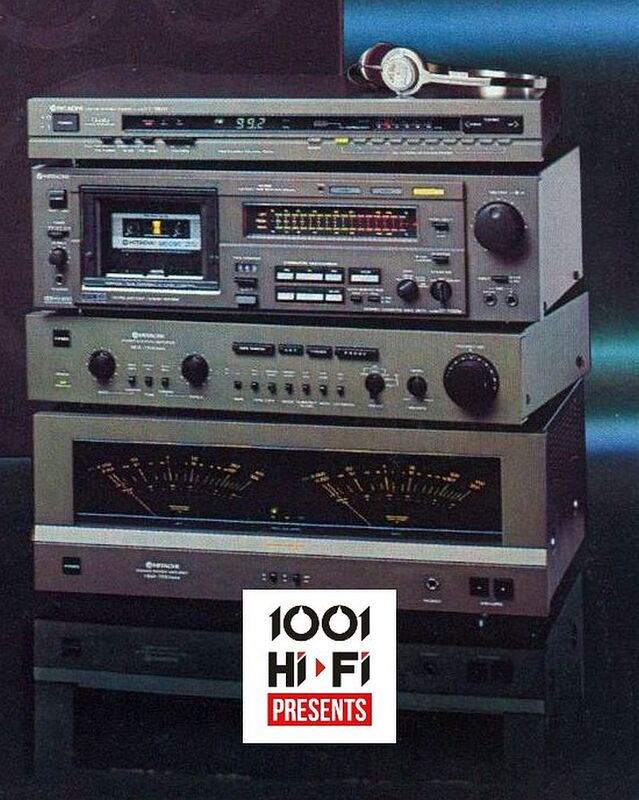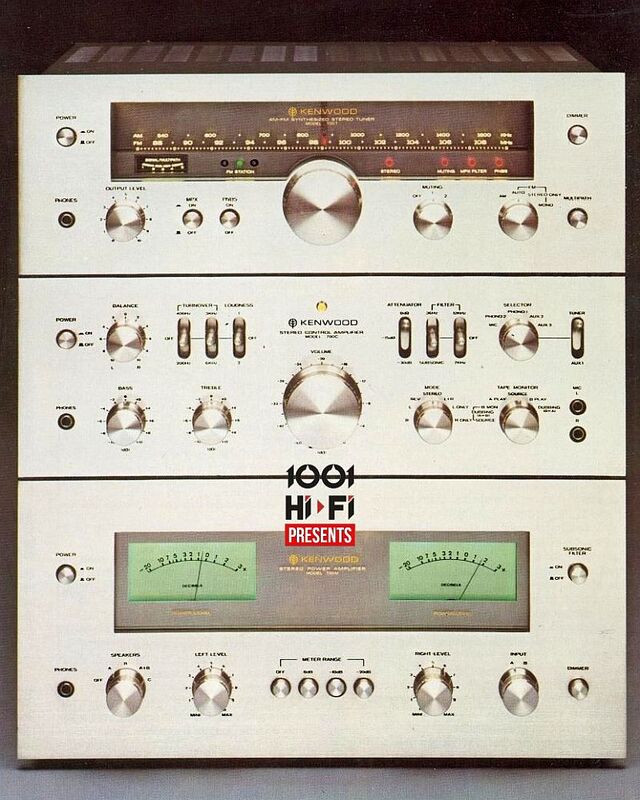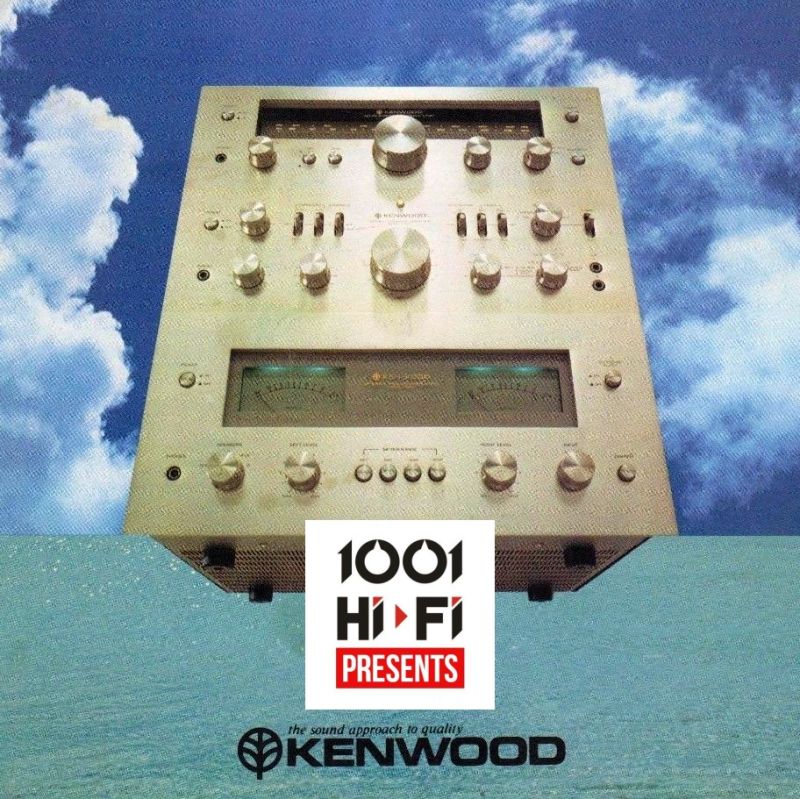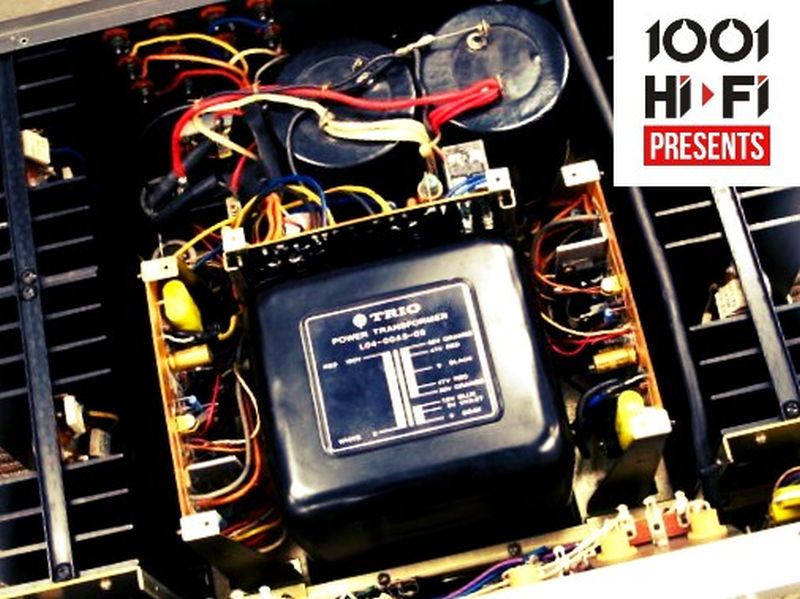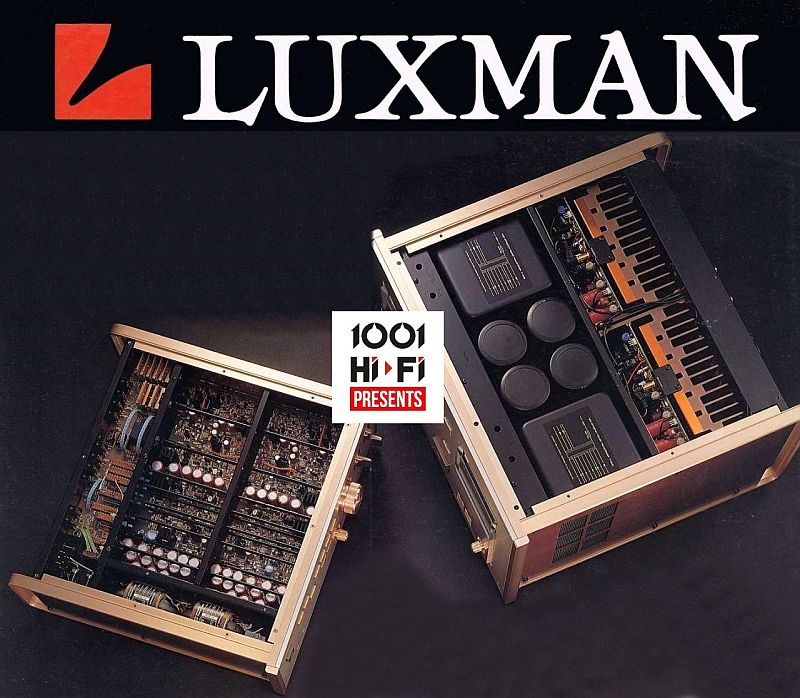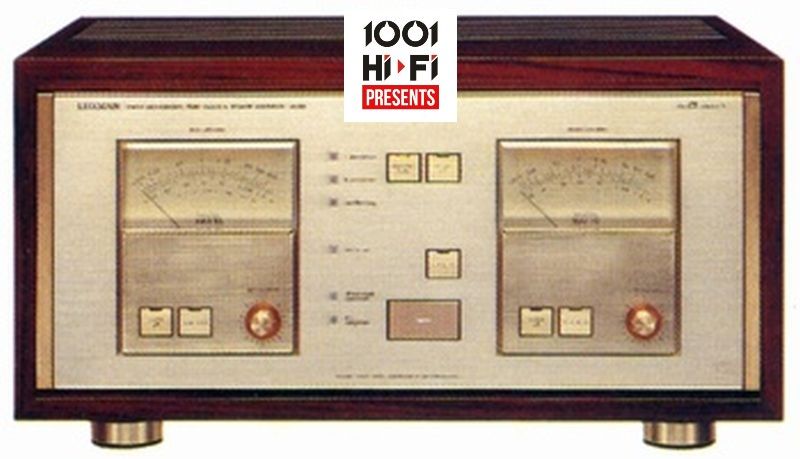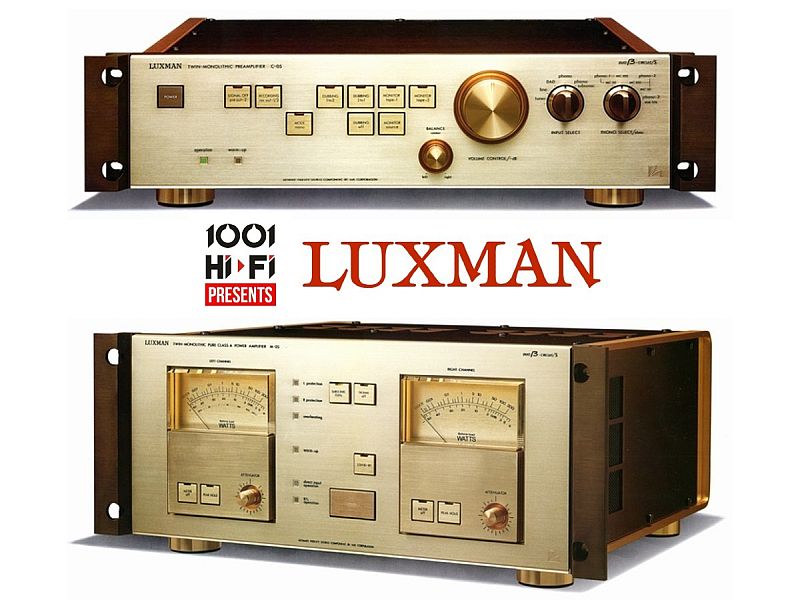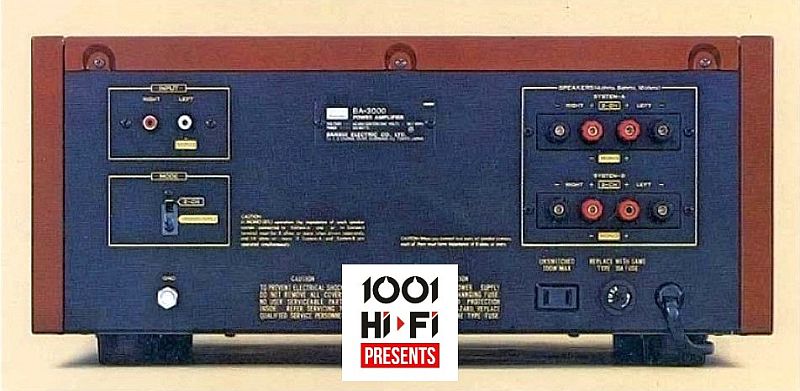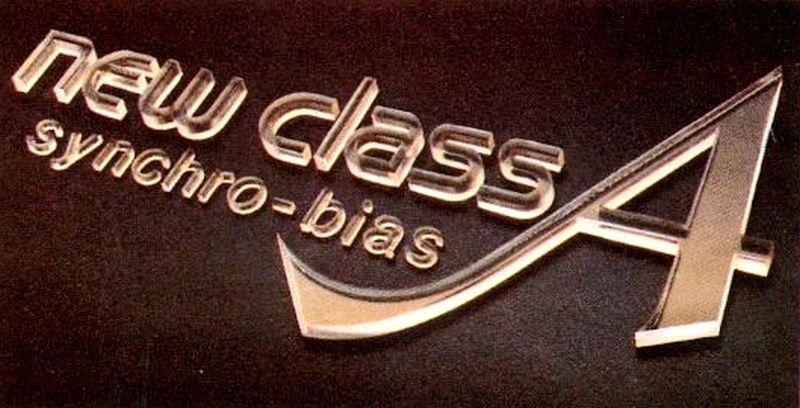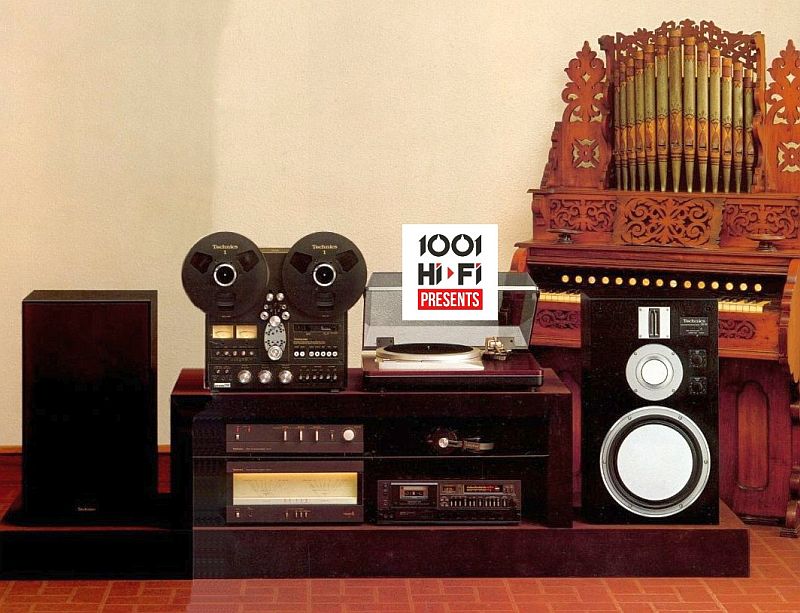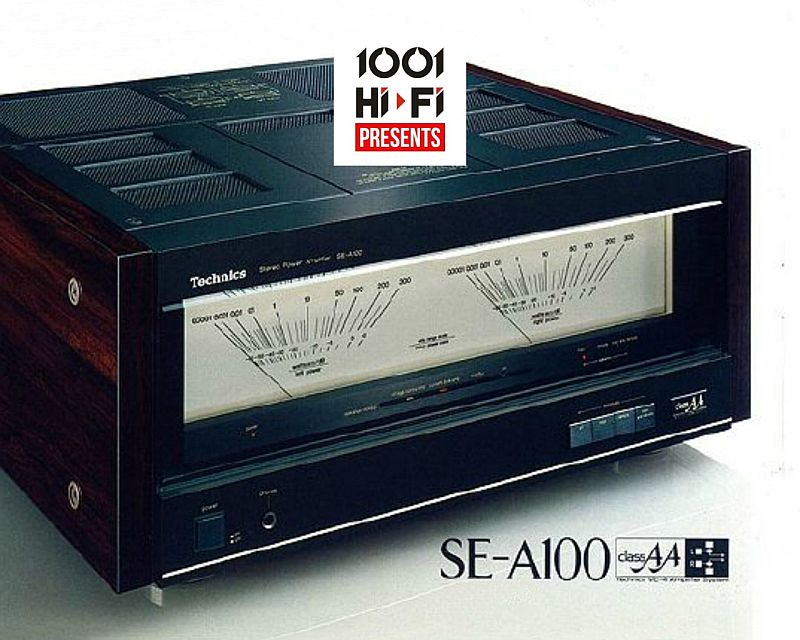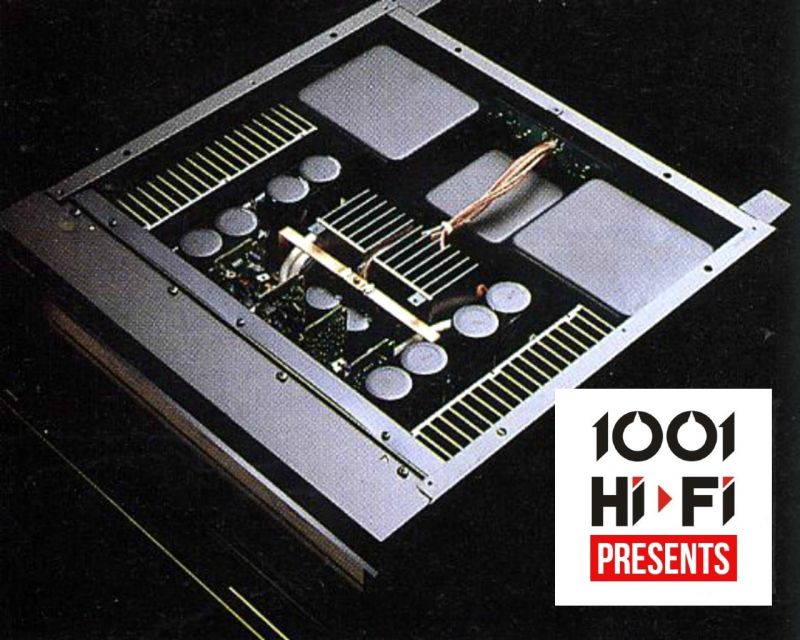HITACHI HMA / HCA-8500MKII (JAPAN 1981)
The HITACHI HMA-8500 MkII was introduced in 1981 and was the last model in a long series of MOSFET power amplifiers by HITACHI (Lo-D in Japan). It is a high quality MOSFET class AB stereo power amplifier that work on principals similar to vacuum tubes rather than bipolar transistors. It's a real dual-mono design with two power transformers and two sets of rectifiers and capacitors. This amplifier runs hot and sounds great. Technical data: 100 W/ch (continuous 8 ohm 20-20,000 Hz with no more than 0.005 THD) Dimensions: 435x165x320 mm.
TRIO KENWOOD 700 LINE (JAPAN 1973)
Formed in 1946, the Trio Corporation has gained an enviable reputation for its development and manufacture of high-class equipment. For those sophisticated audiophiles who can appreciate the 0.0024% tuning accuracy of the 700T Frequency Synthesizing Tuner ... the exceptional control flexibility of the 700C Preamplifier-Control ... the masterful power of the 700M Main Amplifier with its incredible 170 watts per channel Min. RMS (at 8 ohms, 20 to 20,000 Hz with no more than 0.1% total harmonic distortion) ... Trio-Kenwood proudly presents the 700 Series. Each boasts technical specifications well beyond any previous efforts. Each incorporates the most advanced electronics, the most imaginative design concepts. Together they go beyond state-of-the-art performance and come closer to realizing total fidelity by producing a range of realistically priced high-grade equipment that is among the best on the world market. During its 6 years of manufacturing the 700 Series was sold under TRIO, TRIO Supreme and KENWOOD badges. Priced approximately 2150 USD (1975)
LUXMAN C-05 / M-05 (JAPAN 1982)
Over the years, Luxman's strength in engineering excellence has always been most evident in amplifier design. The M-05 represented the latest in electronic technology in 1982 from Luxman and it contains the most current circuit designs, including Duo-Beta with single-stage amplification and L.E.D. bias circuitry. The M-05 utilize discrete output transistors and maintain high dynamic power even into low impedance loads. The top-of-the-line M-05 is a pure class "A" configuration and sonically ranks with the finest amplifiers in the world. A slim but effective power transformer with outstanding regulation is newly designed for this high-quality separate, which ensure long-lasting, stabilized performance in combination with the select capacitors specially developed for audio use. Especially, the power transformer employed this time offers far better efficiency than those with the conventional EI core, which makes it possible to reproduce solid bass sound. Unprecedented speedy attack and decay are given in the actual auditory feelings thanks to our unique bias current circuit employing LED's in lieu of normal diodes. In fact, the LED provides very sharp rise and decay in the statics when compared with silicon diode, and therefore ensures stable bias power supply. In addition, it is possible to cope with even an unexpected, sudden fluctuation due to its inherent high-speed response. Furthermore, the inter-terminal voltage per LED is higher than that of diode in general, and to share the same voltage the smaller number of LED's will do in comparison with that of diode. Thus, the response speed as well as the decay and rise characteristics show multiple effect, providing conspicuous improvement in the auditory feelings. Unexperienced pure sound is now unveiled.
SANSUI BA-3000 (JAPAN 1975)
Uncompromising. When a musical performance must be reproduced to the most critical standards, The Definition Series from Sansui can deliver flawlessly the entire audio spectrum. The Sansui BA-3000 has all the design features of the Definition Series, with a power output of 170 watts per channel, minimum RMS, both channels driven into 8 ohms over a 20 to 20,000Hz bandwidth, with no more than 0,05 % total harmonic distortion; 340 watts, minimum RMS in mono. Features include: Four jumbo heat sinks coupled directly to the power transistors eliminate the need for a cooling fan. LED Power/Protector indicator on front panel glows red when power is switched on, turns green to indicate safe operation; turns red to warn of potentially harmful conditions. BA-3000 has all the safety features, subsonic filters and distortion-free toroidal coil winding power transformer. The Sansui CA-3000 is a stereo control preamplifier featuring advanced space-age design in every link of the circuit chain, for unprecedented accuracy. It has RIAA ± 0.2dB Equalization which is capable of meeting all the strenuous demands of contemporary disc recordings which feature extremely wide dynamic range. The CA-3000 handles an extremely wide frequency response covering all musical signals with low distortion, no clipping or noise. Features include: High input impedance and low output impedance, through newly-developed unit amplifier circuits: a differential amplifier at input, and an emitter-follower or SEPP buffer amplifier at output. Phono equalizer features a packed differential dual FET amplifier (with a matched pair of low-noise FET's) at the initial stage, and Class-A complementary SEPP amp at output. Full controls and connections for any combination you're likely to need. Specifications: Power output: 170 watts per channel into 8Ω (stereo), 340 watts into 8Ω (mono) | Frequency response: 5Hz to 100kHz | Total harmonic distortion: 0.05% | Damping factor: 100 | Input sensitivity: 0.7V | Signal to noise ratio: 100dB | Speaker load impedance: 4Ω to 16Ω | Dimensions: 460 x 178 x 400mm | Weight: 22.6kg | Original sale price: 3600 DM Germany
TECHNICS SE-A3 / SU-A4 (JAPAN 1980)
The Technics SE-A3 power amplifier introduced in 1980 employs a New Class A circuitry that makes it something special. New Class A is a unique Technics design that provides the distortion-free fidelity of class A amplifiers and the high-power efficiency of class B (or AB) amplifiers. The SE-A3 delivers a rated output of 200 watts per channel, both channels driven into 8 ohms, with no more than 0.002% total harmonic distortion from 20 to 20,000 Hz. Signal-to-noise ratio is 123 dB (IHF '66) and TIM is so low that it is unmeasurable. Although these specifications speak for themselves, the New Class A circuitry eliminates the switching distortion and crossover distortion that are characteristic of conventional amplifiers with the use of the original "synchro bias" circuit. To eliminate chances of cross-channel interference the SE-A3 is equipped with separate transformers for the left and right stereo channels. To complement the overall aesthetics this power amplifier uses large Peak Power Meters that have an attack time of only 50us and give direct readings from 0.0001W to full power. We can almost consider this, a Technics trademark. Unfortunately, rumor is that there are two types of Technics SE-A3, one that is broken while the other one will be soon broken. The good news however is that the special DLPT symmetrical configuration dual transistors can be replaced with two independent Toshiba power transistors.
TECHNICS SE-A100 / SU-A200 (JAPAN 1985)
The Class AA circuitry drove the voltage control amp and current drive amp separately. This isolated the voltage control amp from the current supply source, resulting in faithful voltage control according to the input signal as well as reduced distortion. The current drive amp stably supplied the electric current necessary for driving the speakers, thus maximizing its superb speaker drive capability. Two control amps and two current drive amps were provided for each channel. These four amps configured the VC-4 amplifier system. In addition, the completely symmetrical construction eliminated the mutual interference of the left and right channels. Other features included a power supply transformer with oxygen-free copper wires, a three-layer magnetic shielding case and large power meter for direct reading of 0.0001 W to 300 W. Technical data: 170 W/ch 8 ohm 20Hz-20kHz, THD 0.0007%, 430x209x475 mm (SE-A100) 31.2 kg.
YAMAHA B-6 (JAPAN 1980)
Rare (truncated) pyramid shaped stereo power amplifier from Yamaha. At the heart of the Yamaha B-6 from 1980 is the so called "X-Amp" scheme. Initially known as "X-Power", this power scheme was first used in the Benytone X-Calibre lineup and the Carver lineup they were building at this time. It seems that Yamaha, as a later adopter, for some reason didn't implement fully the Benytone/Carver technology so it was renamed "X-Amp". Basically, this system is using a TRIAC which switches between high or low power supplies according to the input signal and output needs. This results in increased output power capacity, but some say that it is not necessarily a good sound too. (200 W/ch 8Ohm, THD: 0,003%, 10-100.000 Hz, 29 x 17,65 x 29 cm, 9,2 kg) As a long time Yamaha collaborator the design is signed by the GK Design Group.





